planetarygeneration - the planet generator
A downloadable tool for Windows and Linux
PlanetaryGeneration will soon NOT be available on itch.io https://buckmartin.de/posts/2025-02-22-leaving-itch-io.html
Tool to generate beautiful planets using noise generation, meteor craters, tectonic plates and hydraulic erosion by Martin Buck (c) 2020.
This information is for version 0.4.0.
Both the full version and a demo of planetarygeneration are available on itch.io.
The free demo is at the very bottom of the page.
Coloring
The exported meshes are currently not colored. The coloring is only present during the rendering.
Early version
Please note that this is a very early version of planetarygeneration. Feel free to report any bugs you might encounter or to request features.
Demo version
Note that the demo works just like the full version and all documentation is valid for it as well.
The only difference is that the executable is called planetarygenerationdemo instead of planetarygeneration and that the demo can't export any results.
Changelog
0.3.0 -> 0.4.0
- Add texture support to the rendering
- Add
path_textureto the configuration - Add
animationconfiguration as part of render configuration - Add
rot_x,rot_yandrot_zto theanimationconfiguration causing the planet to rotate - Render planet colored depending on steepness (you can configure this with custom texture and shader)
- Improve speed of tectonic plate generation
- Improve console output
- Improve shading
- Change background color to black to look more like space
modelviewis now passed to the vertex shader instead of calculating it per vertex, improving performancespacecan be used to pause the animation- Rebound moving the camera upwards from
spacetoshift
0.2.0 -> 0.3.0
- Fix bug where
water_change_per_subdivisionwas not considered (use 0.25 to reproduce the old behavior) - General reduction of memory usage by up to
43%In test configuration:12.6 GB->7.9 GB, even7.2 GBwhen rendering disabled - Rendering now uses way less CPU
- Disabling rendering now reduces memory usage greatly
0.1.0 -> 0.2.0
--configparameter is now optional, usingcfg.tomlas default- Seeds for the random number generators can now be defined in the configuration file If not set, they are now random and will be printed to the console, so you can reproduce them
- Better error messages in case the configuration file is invalid
- Rename
lifttoedge_liftin configuration - Rename
fallofftoedge_falloffin configuration - Rename
max_itertomax_iterationsin configuration - Windows version is now 64Bit
- Improved error messages in case the configuration file is invalid
- Parameter ranges are now enforced with proper error messages
- Render window now always closes properly
Configuration and usage
Subdivisions
The subdivisions cause every face of the sphere's mesh to be divided into 4 smaller ones.
This way the quality of the generation can be improved.
The counts are accumulative, so if you once set it to 2 then on the next step to 4, you'll end up with a 6 times subdivided mesh.
You can also disable rendering to save memory.
Memory Usage
Be careful when using the subdivisions settings, since every count will increase the face count by factor 4, which will also use about 4 times as much memory.
If you set this value too high, you might end up using all the memory of your machine, possibly crashing it.
The current default configuration will consume about 2.5GB of memory. Decrement one of the subdivisions values to drop it to around 700MB.
Order of execution
Below you see the execution order of the separate steps. (assuming you have all enabled)
+-------+ +---------+ +-----------+ +---------+ | Noise | -> | Meteors | -> | Tectonics | -> | Erosion | +-------+ +---------+ +-----------+ +---------+
Configuration
The configuration file is read once on startup. If you made any changes to it, you'll have to restart planetarygeneration.
Please keep in mind that the sphere's size is approximately 1 when you configure settings that affect size.
General
num_cores_reserved
Number of virtual cores that shall not be used for algorithms. Since planetarygeneration is multi-threaded it might use all your CPU time, causing other programs to become unresponsive.
The setting is optional. If missing, all cores might be used. Set this value to >= 1 if you want to use your computer while planetarygeneration is running.
Set it to 0 or remove it if you want planetarygeneration to run as quickly as possible.
Note that this also competes with the rendering, so if you want it to be interactive, you should choose a value >= 1. [int >= 0]
num_cores_reserved = 2
rendering
Use the settings here to enable and configure rendering of the generation progress. The rendering is especially helpful when you're tuning your configuration. Note that this consumes additional memory.
[rendering]
enabled
Set to true or false to toggle the rendering. [bool]
enabled = true
width
Use this to set the initial window size. Note that it can be resized as well. [int >= 0]
width = 500
height
Use this to set the initial window size. Note that it can be resized as well. [int >= 0]
height = 400
path_vertex_shader
In case you want to use your own shader, feel free to change this to a different path. Make sure that you don't change the input / output parameters. [file path]
path_vertex_shader = "shaders/shader.vert"
path_fragment_shader
In case you want to use your own shader, feel free to change this to a different path. Make sure that you don't change the input / output parameters. [file path]
path_fragment_shader = "shaders/shader.frag"
path_texture
Set this path to a RGB8 texture file that shall be used as input for the shader. [file path]
path_texture = "textures/texture.bmp"
rendering.animation
Use these settings to configure the animation.
[rendering.animation]
enabled
Set to true or false to toggle the animation. [bool]
This will cause higher CPU usage since new frames are always rendered and not only when the planet changes.
You can also pause the animation to save on CPU usage.
enabled = true
rot_x
Change to rotation around the x-axis in radians per frame. [float]
rot_x = 0.003
rot_y
Change to rotation around the y-axis in radians per frame. [float]
rot_y = 0.003
rot_z
Change to rotation around the z-axis in radians per frame. [float]
rot_z = 0.003
noise_generation
These settings are used to enable and configure the initial noise generation.
[noise_generation]
enabled
Set to true or false to toggle the noise generation. [bool]
enabled = true
subdivisions
Set the number of subdivisions of the sphere's mesh before running the noise generation. [int >= 0]
subdivisions = 2
seed
The seed to be used for the random number generator. This value is optional and a random seed will be chosen if not present. [int >= 0]
seed = 777
amp
Amplitude of the noise. Use this value to increase / decrease the effect of the noise. [float > 0]
amp = 0.3
wx
The frequency or scale of the noise pattern in the x direction. [float > 0]
wx = 1.0
wy
The frequency or scale of the noise pattern in the y direction. [float > 0]
wy = 0.9
wz
The frequency or scale of the noise pattern in the z direction. [float > 0]
wz = 0.7
octaves
Define the octaves you want to use for the noise generator as array of ints.
Please note that the factors array must have the same length.
octaves = [3, 5, 7]
factors
Define the amplitude factors of the octaves you defined.
Please note that the octaves array must have the same length.
factors = [0.1, 0.05, 0.005]
save
If you want to save the result of the noise generation, define a path here.
It will be stored as binary ply file. [file path]
The value is optional, you can comment it out if you don't want to save the result:
# save = "foo.ply"
meteor_craters
These settings are used to enable and configure the generation of meteor impact craters.
[meteor_craters]
enabled
Set to true or false to toggle the meteor crater generation. [bool]
enabled = false
subdivisions
Set the number of subdivisions of the sphere's mesh before running the meteor crater generation. [int >= 0]
subdivisions = 1
seed
The seed to be used for the random number generator. This value is optional and a random seed will be chosen if not present. [int >= 0]
seed = 777
n_craters
The maximum number of meteor craters that should be generated. [int >= 0]
n_craters = 50
radius_min
The minimum horizontal radius / size of a crater. (Value per crater is chosen between min and max) [float >= 0 && <= radius_max]
radius_min = 0.001
radius_max
The maximum horizontal radius / size of a crater. (Value per crater is chosen between min and max) [float >= 0 && >= radius_min]
radius_max = 0.15
depth_per_radius_min
The minimum depth of a crater depending on its radius. (Value per crater is chosen between min and max and affected by radius) [float >= 0 && <= depth_per_radius_max]
depth_per_radius_min = 0.2
depth_per_radius_max
The maximum depth of a crater depending on its radius. (Value per crater is chosen between min and max and affected by radius) [float >= 0 && >= depth_per_radius_min]
depth_per_radius_max = 0.3
save
If you want to save the result of the meteor crater generation, define a path here.
It will be stored as binary ply file. [file path]
The value is optional, you can comment it out if you don't want to save the result:
# save = "foo.ply"
tectonics
These settings are used to enable and configure the simulation of tectonic plates / edges.
[tectonics]
enabled
Set to true or false to toggle the tectonic plates generation. [bool]
enabled = false
subdivisions
Set the number of subdivisions of the sphere's mesh before running the tectonic plates generation. [int >= 0]
subdivisions = 0
seed
The seed to be used for the random number generator. This value is optional and a random seed will be chosen if not present. [int >= 0]
seed = 777
n_plates
The maximum number of tectonic plates to be generated. [int >= 0]
n_plates = 15
max_iterations
The maximum number of iterations / width of the edge effect when calculating the falloff from collision edges.
Bigger values yield nicer results, but might cost a lot of time. [int >= 0]
max_iterations = 100
edge_lift
The maximum lift of an edge between two tectonic plates. [float]
edge_lift = 0.09
edge_falloff
How the height changes per face distance from the collision edge of plates. [float]
edge_falloff = 0.96 height = edge_falloff * previous_height
whole_plate_lift_min
The minimum vertical lift of a tectonic plate. (Value per plate is chosen between min and max, can be negative) [float <= whole_plate_lift_max]
whole_plate_lift_min = -0.01
whole_plate_lift_max
The maximum vertical lift of a tectonic plate. (Value per plate is chosen between min and max, can be negative) [float >= whole_plate_lift_min]
whole_plate_lift_max = 0.05
amp
Amplitude of the noise applied to collision edges. Use this value to increase / decrease the effect of the noise. [float > 0]
amp = 0.3
wx
The frequency or scale of the noise pattern applied to collision edges in the x direction. [float > 0]
wx = 1.0
wy
The frequency or scale of the noise pattern applied to collision edges in the y direction. [float > 0]
wy = 0.9
wz
The frequency or scale of the noise pattern applied to collision edges in the z direction. [float > 0]
wz = 0.7
octaves
Define the octaves you want to use for the noise generator applied to collision edges as array of ints.
Please note that the factors array must have the same length.
octaves = [3, 5, 7]
factors
Define the amplitude factors of the octaves you defined.
Please note that the octaves array must have the same length.
factors = [0.1, 0.05, 0.005]
save
If you want to save the result of the tectonic plate generation, define a path here.
It will be stored as binary ply file. [file path]
The value is optional, you can comment it out if you don't want to save the result:
# save = "foo.ply"
erosion
These settings are used to enable and configure the simulation of hydraulic erosion.
[erosion]
enabled
Set to true or false to toggle the erosion simulation. [bool]
enabled = false
seed
The seed to be used for the random number generator. This value is optional and a random seed will be chosen if not present. [int >= 0]
seed = 777
water_start
The initial amount of water dropped every iteration. This directly affects the strength of the erosion. [float > 0]
water_start = 15.0
iterations_per_subdivision
With this setting you can both define the subdivisions and number of iterations of the erosion.
Each value defines the number of iterations, while between the values a subdivision is applied.
Please note the comments about subdivisions and their memory consumption.
iterations_per_subdivision = [10, 20, 40]
water_change_per_subdivision
You can alter the dropped water amount with every subdivision. Every subdivision the dropped water amount gets changed by this factor. [float > 0]
water_change_per_subdivision = 0.5 water = water_change_per_subdivision * water_previous_subdivision
soil_eroded_per_water
How much soil is picked up per amount of water. Directly affects the strength of the erosion. [float > 0]
soil_eroded_per_water = 3.0
soil_capacity_per_water
To avoid water carrying too much soil, this value defines how much soil can be carried per water.
It makes sense to choose a value greater than soil_eroded_per_water. [float > 0]
soil_capacity_per_water = 9.0
max_depth
The maximum depth / iterations of a single water droplet. This setting can be used to avoid very long running simulations similar to water_amount_min. [int >= 0 <= 255]
max_depth = 120
water_amount_min
Since the simulation is long running, it makes little sense to keep simulating where there is very little water left. With this value you can avoid wasting time, by aborting once a certain threshold water amount is reached. [float >= 0]
water_amount_min = 0.0003
scale_factor
This factor defines what "size" the soil change shall have. Please note that the initial sphere has a size of 1. [float > 0]
scale_factor = 0.00003 effect_on_sphere = scale_factor * soil
water_change_factor
How the water amount shall change every iteration. [float > 0]
water_change_factor = 0.95 water = water_change_factor * water_previous_iteration
steep_pow
This affects the erosion's strength depending on the steepness of slopes. Use this to generally affect the steepness of slopes. [float > 0]
steep_pow = 2.0 eroded = OTHER_FACTORS * steepness^steep_pow
save_every and save_every_path
Since the erosion step might run a long time and it's not clear how many iterations you should run to yield a good result, you can also save intermediate results as binary ply. [int >= 0 / file path]
Both these values are optional, but have to be enabled / disabled together.
save_every = 10 save_every_path = "intermediate.ply"
Saves the erosion's result every 10 iterations to intermediate.ply.
save
If you want to save the result of the erosion simulation, define a path here.
It will be stored as binary ply file. [file path]
The value is optional, you can comment it out if you don't want to save the result:
# save = "foo.ply"
Controls
If you have rendering enabled, you can use the following controls:
Move camera [W] [A] [S] [D] [Shift] [CTRL] [C] Rotate camera [Q] [E] [ARROW KEYS] Change camera speed [MOUSE WHEEL] Pause the animation (if enabled) [Space] Close [ESC]
Using / Running planetarygeneration
Once you created a configuration file as described under Configuration, you can start running planetarygeneration from a console window (e.g. cmd.exe or powershell.exe on Windows).
If you're using the demo replace planetarygeneration with planetarygenerationdemo below.
If you want to run planetarygeneration with the default configuration file cfg.toml use:
planetarygeneration
To use another configuration file, pass its path as --config parameter:
planetarygeneration --config "MyConfiguration.toml"
In case you break your configuration file, you can use --generate-config to create a new one:
planetarygeneration --generate-config "NewCfg.toml"
With the --help parameter you can print additional information:
planetarygeneration --help
Download
This tool is currently unavailable
Development log
- PlanetaryGeneration is leaving itch.ioFeb 23, 2025
- Release of 0.4.0 - ColorsFeb 02, 2020
- Release of 0.3.0 - 43% less memory usageJan 21, 2020
- release of planetarygeneration 0.2.0Jan 12, 2020


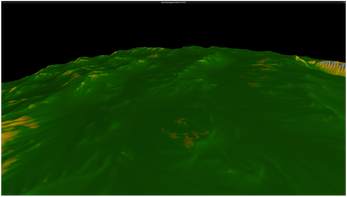

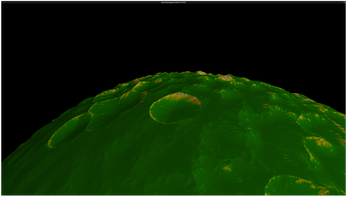
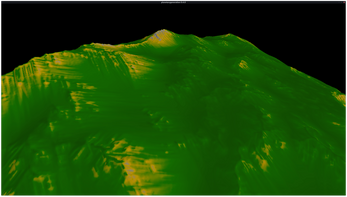
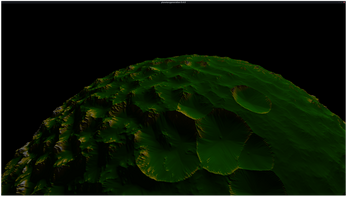

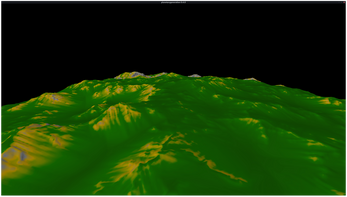
Comments
Log in with itch.io to leave a comment.
Hello there,
out of curiosity, has this program an auto update function; or is it necessary to check the page for new versions? Just asking.
There's currently no auto update
Thanks for making this! This tool is exactly what I was looking for and I bought it right away! Do you have any example values for an Earth like planet and Moon? Also can you share any values/seeds that you found made interesting planet shapes? Thanks!
Hi pigeonaut!
I'm glad you like it :) If you have any ideas for improvements or find any bugs, please let me know.
For Earth like results I'd try to tone most effects down and increase the subdivisions especially during the erosion by setting more values at iterations_per_subdivision.
Please note that every additional value there increases the memory demand approximately by x4.
I think I generated the screenshots here from the default configuration with many erosion iterations.
To create something similar to the Moon I'd focus on the meteor settings. Having many meteors and a huge range between radius_min and radius_max should yield nice results.
If I stumble on new/old settings that yield great results, I'll let you know :)
Thank you so much! I'll let you know if I hit any bugs